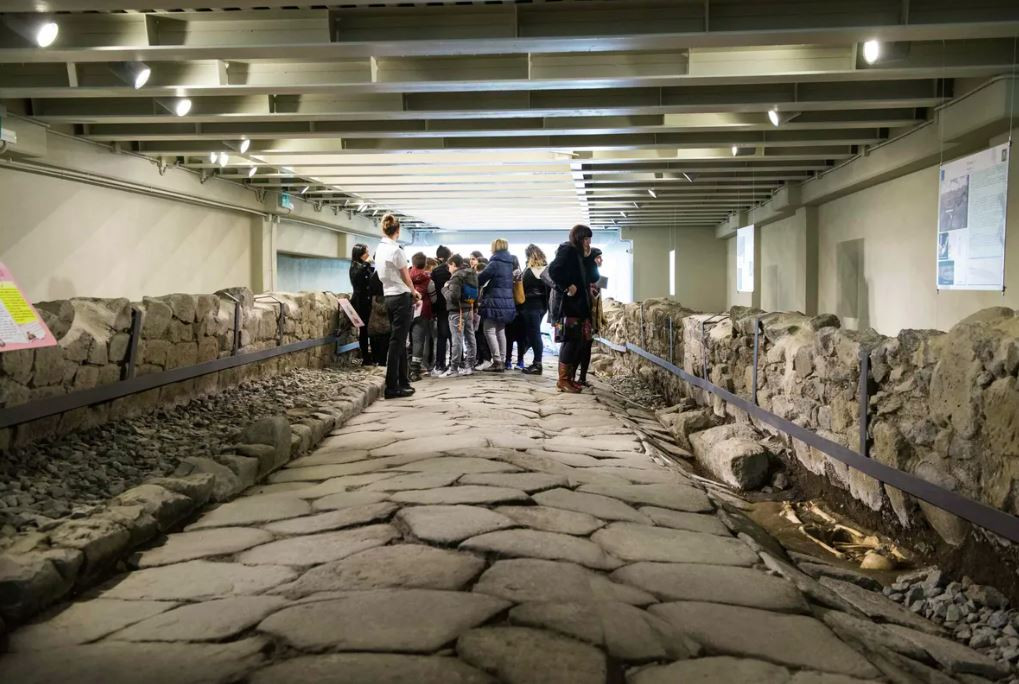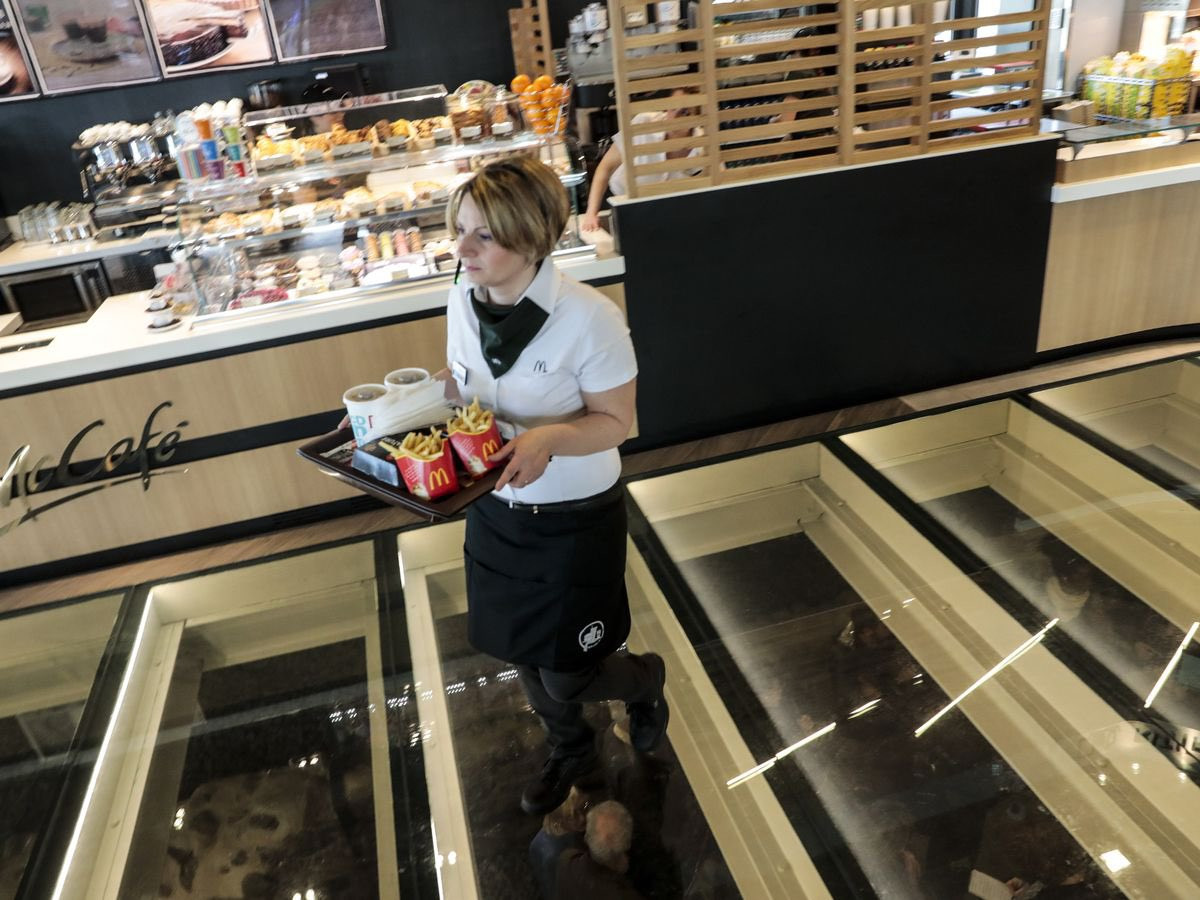If your path passes through Marino on the outskirts of Rome, we suggest you stop at the McDonald’s branch here and have a different experience. Because this is not an ordinary McDonald’s restaurant. When you enter this restaurant, you will meet an ancient Roman road and the skeletons of three Romans underneath.
The Appian Way was one of the oldest and most important roads built during the Roman Republic. It connected Rome to the southern city of Brindisi, which stretched for 195 kilometers (132 miles), and a modern version of the road continues to exist and continue to be used today. Much of the old road and the smaller roads radiating from it became obsolete in the later years of the empire. The road under McDonald’s is one of those pieces.
 Those who wish can visit the ruins.
Those who wish can visit the ruins.At some point between the second and third centuries AD, use of this section of the road was discontinued. It started to be covered first with soil and then with vegetation. Thus, the location began to be used as a cemetery. That is why there are three skeletons next to the road that stretches for 45 meters under the restaurant.
The tombs were in the ancient drainage canal, next to a wall that still stands today. We already know that Roman cement is extremely durable and potentially has self-healing properties.
The three buried people turned out to be men and were likely buried in coffins or shrouds. However, nothing remained, including personal belongings, only their skeletons. Archaeologists determined that the elderly person was between 35 and 45 years old and had lost a few molars during his lifetime, perhaps due to age, disease or simply malnutrition. He had a fracture in his right leg that led to a larger thighbone, which could have caused him difficulty moving. He worked hard all his life, as his vertebrae suggest.
 The ruins under the restaurant can be seen through the glass floor.
The ruins under the restaurant can be seen through the glass floor.The other two graves belonged to people, both much younger. No evidence of disease was found in the skeletons, only some signs of malnutrition. It is not clear what the cause of death for all three of them is.
The entire area was discovered in 2014 when workers started building the restaurant. But this discovery did not stop construction. Instead, the ruins were protected by a glass floor built into the restaurant’s floor.
It’s debatable how logical it was to build a huge fast-food restaurant on one of the Romans’ roads. But it has to be admitted that these roads and skeletons make this McDonald’s restaurant a very different place.